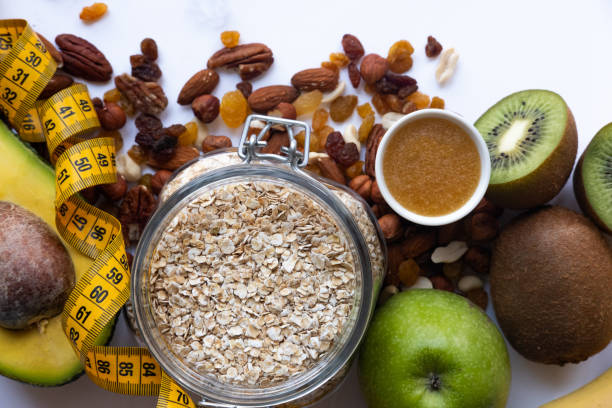Introduction of signs of gaining muscle in females
For women, building muscle is more than just a physical transformation—it’s a journey toward strength, health, and empowerment. Recognizing the signs of gaining muscle female is essential for tracking your fitness progress. From improved strength to changes in body composition, let’s explore how you can tell if you’re building lean muscle and how to optimize your routine for success.
How Does Muscle Growth Happen?
Understanding the Process
Muscle growth, or hypertrophy, occurs when you challenge your muscles through strength training. The process involves micro-tears in the muscle fibers, which your body repairs to make them stronger and larger.
Factors That Drive Muscle Growth
- Progressive Overload: A training method that involves incrementally adding weight or resistance to exercises over time.
- High-Protein Diet: Consuming adequate protein supports muscle repair and growth.
- Recovery Time: Rest is when muscles rebuild and grow stronger.
Key Signs of Gaining Muscle Female

Improved Strength Levels
If you’re lifting heavier weights or completing more reps than before, it’s a clear sign that you are gaining muscle. Strength improvements often occur before visible physical changes.
Noticeable Changes in Body Composition
A leaner, more toned appearance is a hallmark of gaining muscle. As your body fat percentage decreases, you’ll see more definition, especially in areas like your arms, legs, and core.
Gradual Weight Gain
While the scale may go up, this can be a good sign that you’re gaining muscle mass. Remember, muscle is denser than fat, so the weight increase reflects added strength, not bulk.
Understanding the Difference: Muscle vs. Fat

Muscle Density vs. Fat Volume
Muscles take up less space than fat, even at the same weight. This explains why your clothes may fit better even if your body weight increases slightly.
The Role of Body Fat Percentage
The reduction in body fat percentage often accompanies muscle growth. This balance creates a leaner, more athletic physique.
Physical Signs of Muscle Growth

A Firmer, More Defined Body
As you build muscle mass, your body will appear tighter and more sculpted. Areas like your thighs, shoulders, and abs may feel firmer to the touch.
Enhanced Posture and Mobility
Stronger muscles support your joints and spine, leading to better posture and easier movement during daily activities.
Soreness After Workouts
Occasional muscle soreness (DOMS) is a good sign that your muscles are being challenged and are rebuilding stronger.
How to Accurately Track Muscle Growth
Strength Progress Tracking
Keep a record of your exercise sessions to monitor progress in lifting heavier weights, repetitions, and sets. A consistent increase in performance is a sure sign that you are gaining muscle.
Body Measurements
Use a tape measure to track changes in areas like your arms, chest, waist, and thighs. This provides a clearer picture than relying on the scale alone.
Advanced Tools Like a DEXA Scan
A DEXA scan offers precise insights into your muscle mass and body fat percentage, helping you monitor progress effectively.
Benefits of Gaining Muscle for Females

Boosted Metabolism
Muscle tissue burns more calories at rest compared to fat, making it easier to maintain a healthy weight.
Improved Physical Performance
Whether it’s carrying groceries or running a race, stronger muscles enhance functional fitness and everyday performance.
Enhanced Confidence and Energy
Building muscle often leads to increased energy levels and self-esteem, helping you feel more empowered in every aspect of life.
Nutrition Tips for Building Muscle and Losing Fat

Focus on Protein-Rich Foods
Incorporate protein-rich foods such as poultry, seafood, eggs, and plant-based alternatives into your meals. Strive to consume 1 gram of protein for every pound you weigh each day.
Eat Enough to Support Muscle Growth
The slight calorie surplus is often necessary for building muscle. outcomes, pair this with a regimen of resistance exercises.
Stay Hydrated
Proper fluid intake is essential for rebuilding muscle tissue and achieving optimal physical function. Drink plenty of water, especially after workouts.
Effective Strength Training Strategies for Women
Compound Movements for Full-Body Benefits
Exercises like squats, deadlifts, bench presses, and pull-ups target multiple muscle groups, maximizing muscle gain.
Incorporate Progressive Overload
your muscles to their limits and stimulating development.
Prioritize Recovery and Rest Days
Muscle growth happens during recovery, so make sure to include rest days and prioritize sleep.
Debunking Myths About Female Muscle Gain
Myth 1: Lifting Weights Makes Women Bulky
Women naturally produce less testosterone, making it difficult to gain large amounts of muscle mass. Instead, lifting weights leads to a lean, toned physique.
Myth 2: Cardio Is Better for Weight Loss
While cardio can help lose weight, combining it with strength training ensures fat loss while preserving or increasing muscle.
Combining Muscle Growth and Fat Loss
Increasing Muscle Mass and Reducing Body Fat at the Same Time
This process, called body recomposition, involves maintaining a balance between calorie intake and expenditure. A high-protein diet and strength training are essential for success.
Recognizing Progress Beyond the Scale
Instead of fixating on the number on the scale, celebrate small wins like the way your clothes fit better or the increased energy and confidence you feel. These subtle changes can be more telling of your true progress than the scale alone.
Conclusion
The Signs of Gaining Muscle Female is about much more than appearance—it’s a path to improved strength, health, and self-confidence. By recognizing the signs of muscle growth and implementing effective training and nutrition strategies, you can achieve lasting results. Celebrate your progress, stay consistent, and enjoy the empowering benefits of building muscle.
FAQs
1. How do I know if I’m gaining muscle instead of fat?
Look for signs like increased strength, a firmer physique, and a reduced body fat percentage. Tools like a DEXA scan can provide precise insights.
2. Can I build muscle without gaining weight?
Yes, through body composition. This involves gaining muscle and losing fat at the same time by balancing your diet and training effectively.
What is the duration required to observe muscle growth?
You’ll typically notice strength improvements within 4–6 weeks and visible changes within 8–12 weeks of consistent training.
4. What are the best exercises for female muscle gain?
Focus on compound lifts like squats, deadlifts, and bench presses, combined with accessory exercises for balanced development.
5. Should I combine cardio with strength training?
Yes, moderate cardio can improve cardiovascular health while complementing strength training. However, prioritize strength workouts for muscle growth.




Baddiehubs I like the efforts you have put in this, regards for all the great content.
Tech to Force I’m often to blogging and i really appreciate your content. The article has actually peaks my interest. I’m going to bookmark your web site and maintain checking for brand spanking new information.
Реально ли приобрести диплом стоматолога? Основные этапы
Легальная покупка школьного аттестата с упрощенной программой обучения